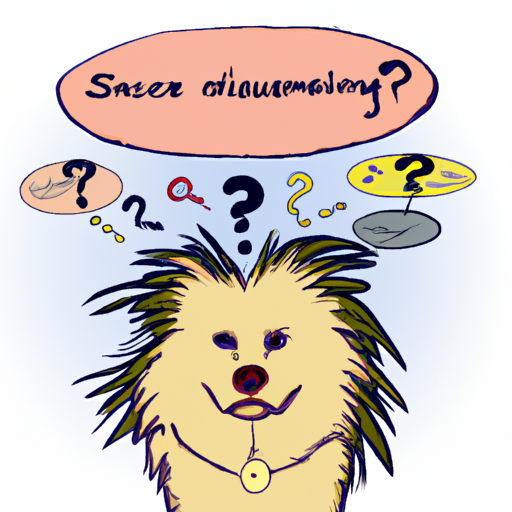Introduction
You’re sitting there, watching your beloved dog play in the park, when suddenly you notice something peculiar. Their fur is standing on end, a phenomenon often referred to as “piloerection”. It’s an unusual sight, and it might leave you with a few questions. What causes this? Is it a cause for worry? Should you do something about it? Let’s dive into the answers.
Understanding Piloerection
Piloerection, or what you may commonly refer to as a dog’s hair standing up, is actually a normal physiological response. You might have experienced a similar sensation when you’ve felt a sudden chill or when you’ve been scared – it’s often called “goosebumps”.
Table: Piloerection in Humans vs Dogs
| Human | Dogs |
|---|---|
| Goosebumps | Hair stands up |
Piloerection in dogs serves various purposes:
- Intimidation: It makes your dog appear larger and more threatening to potential predators or rivals.
- Thermal Regulation: It helps to trap a layer of air close to the skin, providing insulation against cold weather.
- Emotional Indication: It can be a sign of fear, excitement, or anxiety.
Recognizing the Signs
So, how do you know if your dog’s hair is standing up? Here are some telltale signs:
- The fur along your dog’s back and tail is raised.
- The fur may seem to “flutter” or “ripple”, especially if your dog is moving.
- You may notice other signs of stress or excitement, like panting, pacing, or vocalizing.
Why It Matters
Should you be concerned about piloerection? Not necessarily. It is a natural response and can happen in a variety of situations:
- During play: Your dog may display piloerection while playing with other dogs, especially during rough-and-tumble games.
- When they’re scared: If something startles or frightens your dog, their fur might stand on end.
- In response to cold: On chilly days, your dog’s fur might stand up to help them stay warm.
However, if you notice this happening frequently or without an apparent reason, it could indicate a problem. High levels of stress, fear, or aggression can lead to frequent piloerection. In such cases, it may be beneficial to seek advice from a professional dog trainer or behaviorist.
How to Respond
As a caregiver, you naturally want to do what’s best for your dog. Here’s how you can respond if you notice your dog’s hair standing up:
- Stay calm: Your dog looks to you for cues on how to behave. Responding calmly can help to diffuse a tense situation.
- Give them space: If your dog is feeling threatened or scared, giving them some space can help them to feel safer.
- Seek professional advice: If you’re unsure, don’t hesitate to consult with a professional. They can provide guidance tailored to your dog’s specific needs.
FAQ’s
Q: Can all dogs experience piloerection?
A: Yes, all dogs can experience piloerection, but it may be more noticeable in some breeds than others.
Q: How can I tell if my dog’s hair standing up is a sign of aggression?
A: Piloerection accompanied by growling, snarling or snapping could be a sign of aggression. If you’re concerned, it’s best to consult with a professional.
Q: My dog’s hair is always standing up. Should I be worried?
A: If your dog’s hair is frequently standing up without an obvious reason, it could be a sign of chronic stress or fear. It’s best to seek advice from a professional.
Q: Can I do anything to prevent my dog’s hair from standing up?
A: Not really, as piloerection is a natural response. However, providing a calm and safe environment can help reduce stress and anxiety, which can in turn reduce the frequency of piloerection.



